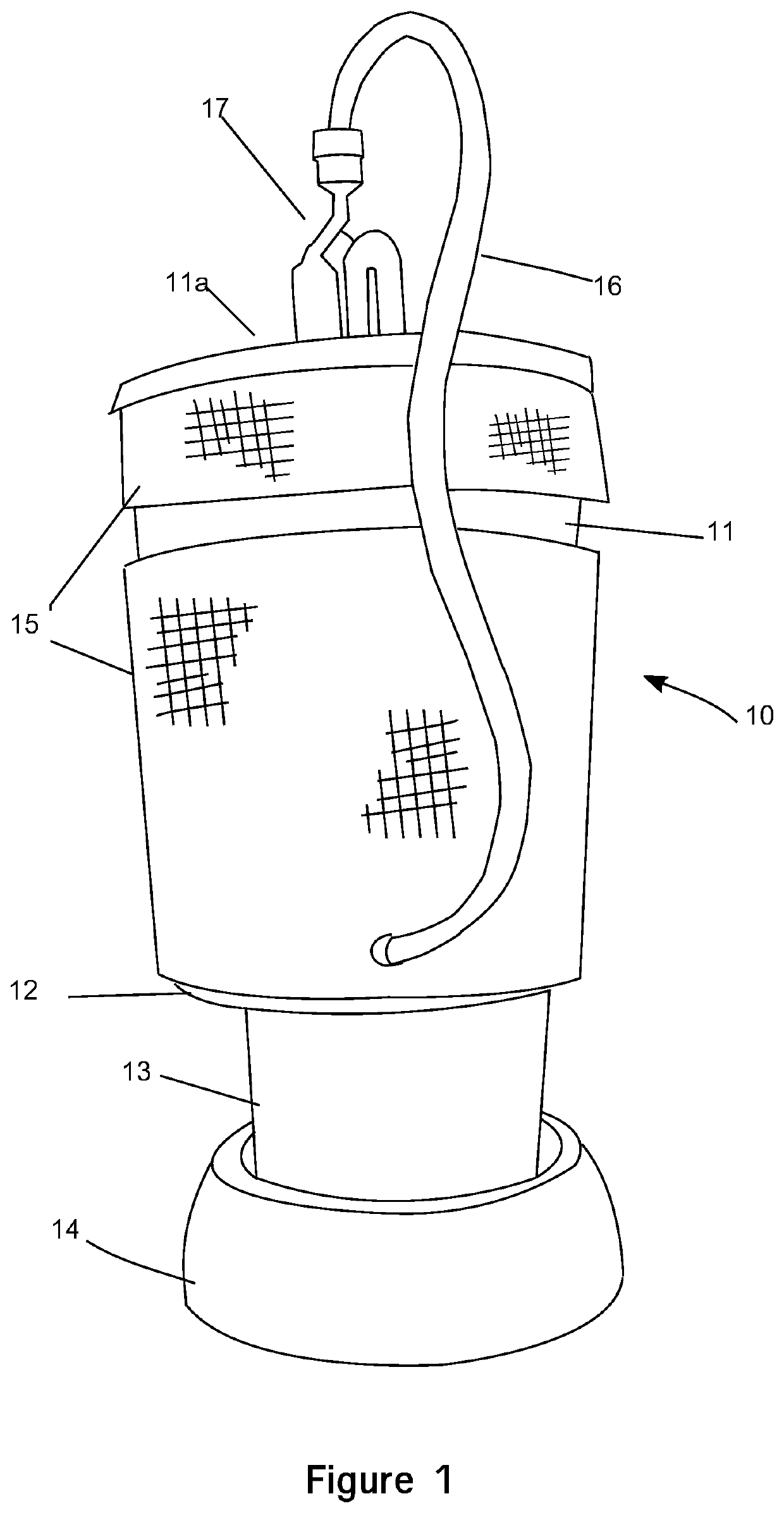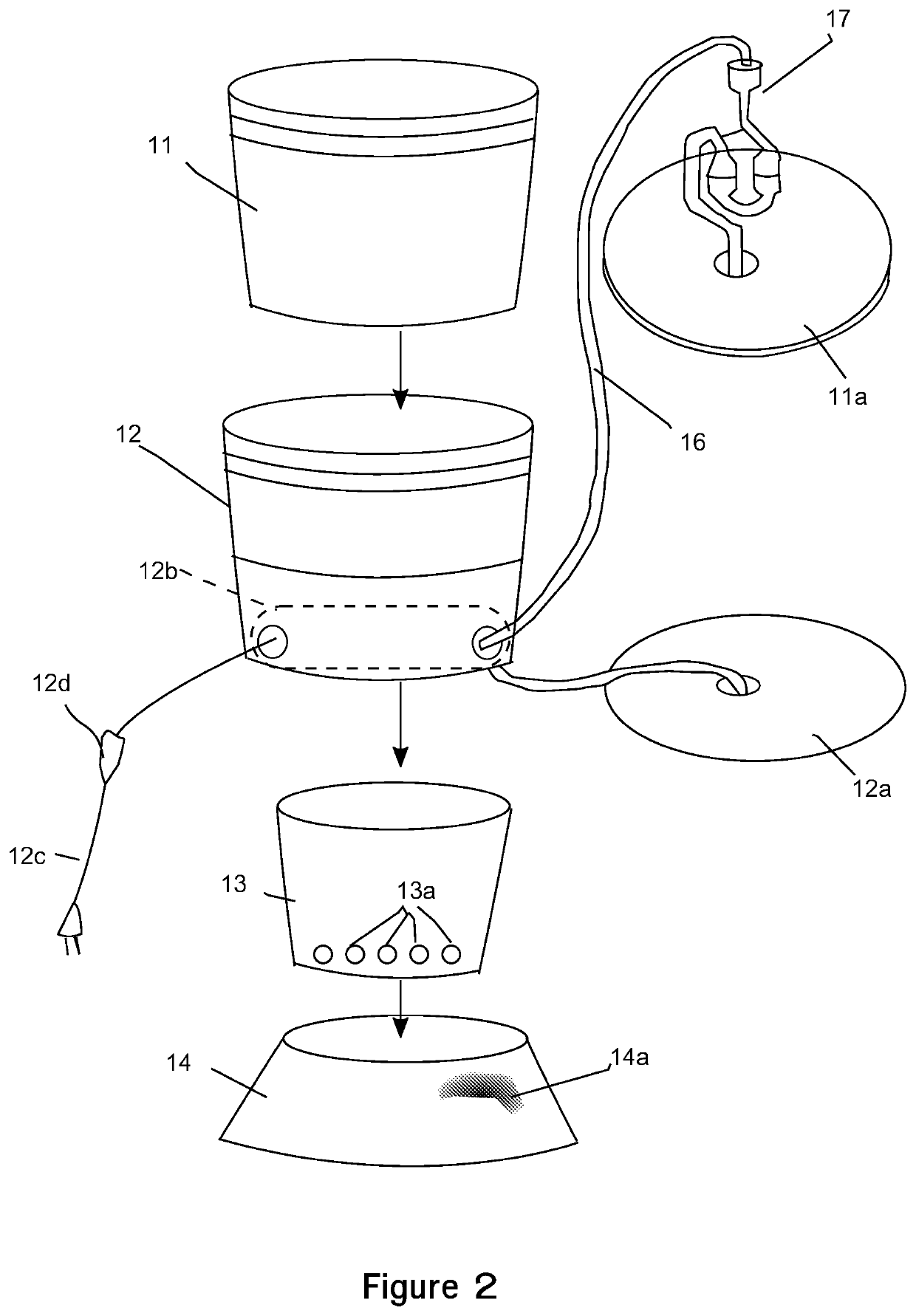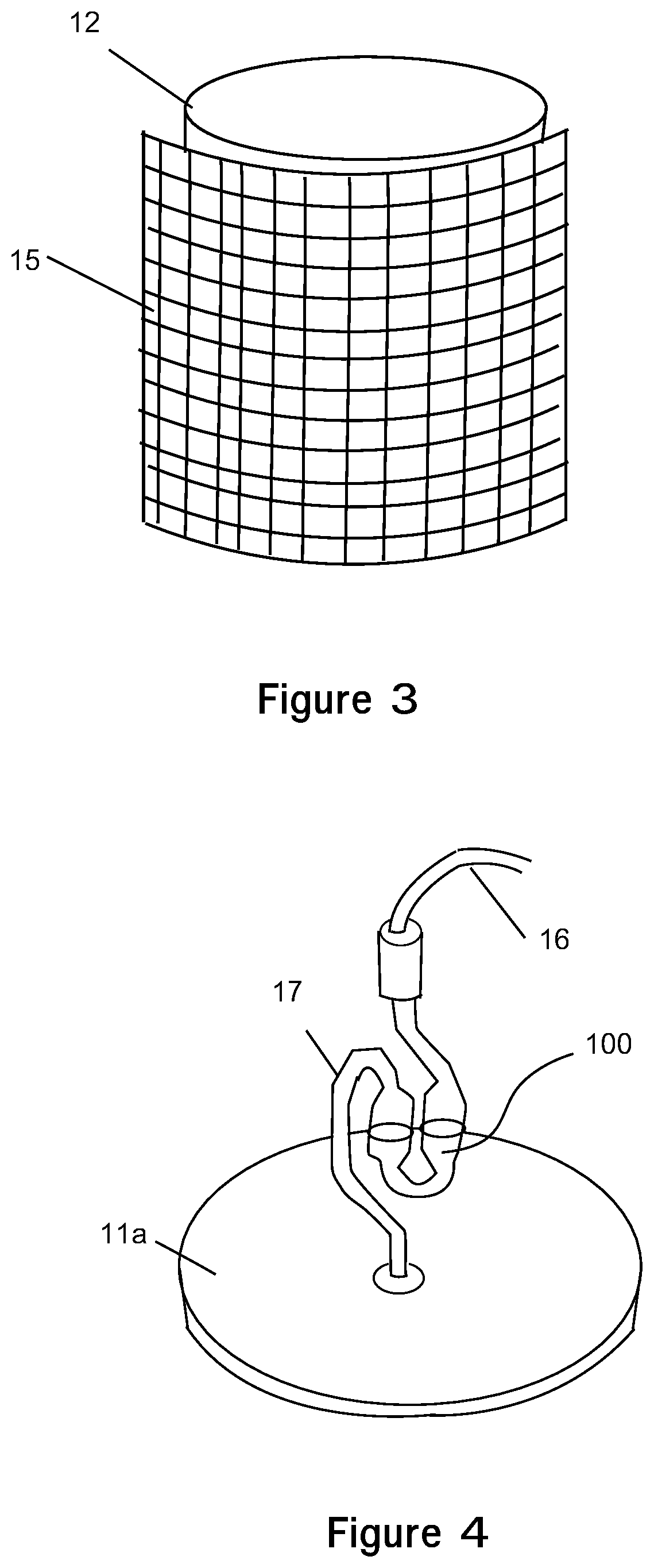Bedbug Trap With Carbon Dioxide Generator
a technology of carbon dioxide generator and bedbug trap, which is applied in the field of bedbug traps, can solve the problems of bedbugs being notoriously difficult to get rid, the use of one-time-use canisters to generate carbon dioxide is expensive, and the canisters are often changed, so as to achieve a larger heat signature and easy replacement
- Summary
- Abstract
- Description
- Claims
- Application Information
AI Technical Summary
Benefits of technology
Problems solved by technology
Method used
Image
Examples
Embodiment Construction
[0025]Referring now to the drawings and particularly, FIGS. 1 and 2, the bedbug trap 10 is shown. The trap 10 has a number of stacked and nested containers as shown in FIG. 1. FIG. 2 shows these containers in an exploded view. The uppermost container 11 is a large hollow vessel that has a removable top 11a. As discussed below, the sugar, water and yeast mixture is held in this container. This container is placed into the middle container 12. Note the bottom 12a of the middle container 12 This container is also a hollow vessel. A heating pad 12b is stored in the bottom of this container as shown. Note the power cord 12c of the heating pad 12b and the switch 12d. The upper container 11 is designed to fit on the top of the heating pad 12b, which enables heat to heat the sugar, water and yeast mixture is held in upper container 11.
[0026]As discussed above, the upper container 11 has a top 11a. This top is fit onto the top of the upper container as shown in FIG. 1. Note the insulation 15...
PUM
 Login to View More
Login to View More Abstract
Description
Claims
Application Information
 Login to View More
Login to View More - R&D
- Intellectual Property
- Life Sciences
- Materials
- Tech Scout
- Unparalleled Data Quality
- Higher Quality Content
- 60% Fewer Hallucinations
Browse by: Latest US Patents, China's latest patents, Technical Efficacy Thesaurus, Application Domain, Technology Topic, Popular Technical Reports.
© 2025 PatSnap. All rights reserved.Legal|Privacy policy|Modern Slavery Act Transparency Statement|Sitemap|About US| Contact US: help@patsnap.com



